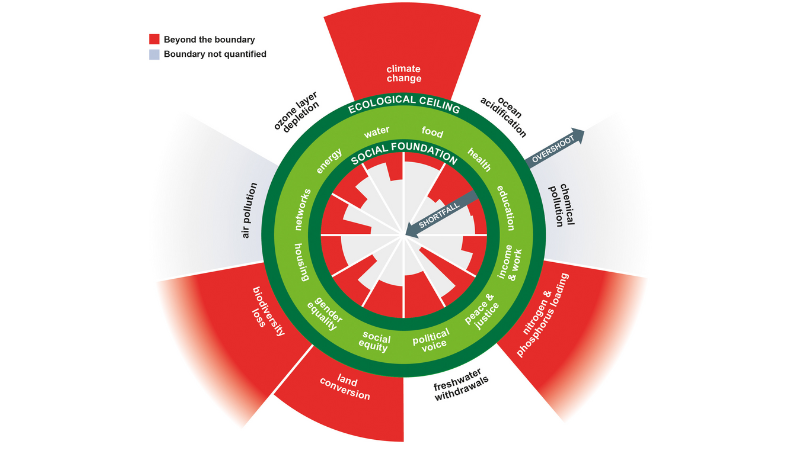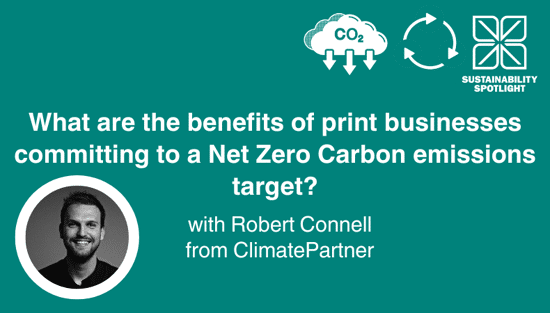How to make effective sustainable changes for your business
.png?width=750)
FESPA has created Sustainability Spotlight to offer informative and actionable advice around environmental best practice to allow businesses to make more sustainable and environmentally friendly choices for their business. This article offers various guidelines for businesses to help them make sustainable business changes, access the full guidelines below.
How to make effective sustainable changes for your business
FESPA has created Sustainability Spotlight to offer informative and actionable advice around environmental best practice to allow businesses to make more sustainable and environmentally friendly choices for their business. This article offers various guidelines for businesses to help them make sustainable business.
Choosing the Right Sustainable Material To Print On
Sustainability is a journey for any business and choosing sustainable materials to print on is only one of many paths to choose from to make this feasible. Today, there are several highly innovative materials that can be used when printing. However, it is important to take into account the various factors when choosing the right material. For more information on choosing the right sustainable material to print on read here.
UN SDGs and Circular Economy
By accessing the right guidance for your business can truly allow your business to become more sustainable. For more information on the United Nations Sustainable Development Goals and Circular Economy read here.
Carbon Footprinting
Carbon Footprinting offers businesses an understanding of their contribution towards climate change. The term ‘carbon’ encompasses all key greenhouse gas emissions where carbon dioxide is used as the main reference point. There are various, available tools that can help businesses make these calculations. For more information on carbon footprinting read here.
Certification Schemes
Certification schemes ad standards have various purposes. Some are used to help businesses to reach and set their goals. Others demonstrate what a business has achieved be it a certain performance level or benchmark. Other certifications are designed for products to specifically demonstrate qualities that help your business make sustainable choices. In addition, there are standards that assist with reporting or environmental statements. For more informationon certification schemes read here.
Energy Reduction
By reducing your business’s energy will help tackle energy bills and climate change. The cheapest kWH is the one you do not use and is also the one with the least climate impact. There are several ways to reduce energy which include changing behaviour, and using technology. There cheap, quick wins that your business can action or more serious investments. For more information on energy reduction read here.
Brands
Larger businesses are legally required to report on their energy use and carbon emissions. In addition, new global treaties will be introduced over the next few years that will demand that businesses need to understand what is in their supply chain no plastics for 2024 and forests. Several businesses have signed up to global voluntary initiatives for carbon disclosure that include their supply chains and are undertaking sustainability reporting and programmes of net zero. For more information on the importance of understanding your business's supply chains read here.
Recent news

What are the benefits of print businesses committing to a Net Zero Carbon emissions target?
We speak to Robert Connell, Senior Commercial Sustainability Manager at ClimatePartner who who offer solutions along the net zero cycle to support business’s effort in corporate climate action. In this discussion we discuss the importance and the process and benefits of businesses committing to a Net Zero Carbon emissions target.

6 Sustainable Printing Practices Changing the Game in Textile and Apparel Decoration
The textile industry is shifting towards sustainability. Innovations like waterless and digital printing, eco-friendly inks, and recycled materials are reducing waste. AI and automation optimise production, while circular models promote reuse. Consumer demand for transparency drives this change, making sustainable practices essential for future-focused brands.

Sustainability in Production Print: Advancing Practices in Wide Format, Textiles, and Software
As sustainability continues to take centerstage across industries, the production print sector is making massive strides in integrating eco-conscious practices. From wide format to textile applications, with the growing reliance on advanced production software, the space is evolving to meet environmental goals as well as consumer demand for sustainable products.

Why must the print industry recognise software and material innovation
Laurel Brunner argues that the printing industry must recognise the value of both software and material innovation, and be willing to pay for it. Software, though intangible, drives efficiency and reduces carbon footprints. While materials science currently dominates, R&D costs are inherent in all advancements. Paying a premium ensures continued progress, benefiting the industry's evolution and sustainability.